- Home
- slideshows
- miscellaneous
- The 30 biggest stadiums in world sports, ranked by crowd capacity
The 30 biggest stadiums in world sports, ranked by crowd capacity
=29: Twickenham — London, England

=29: FedExField — Landover, Maryland, United States
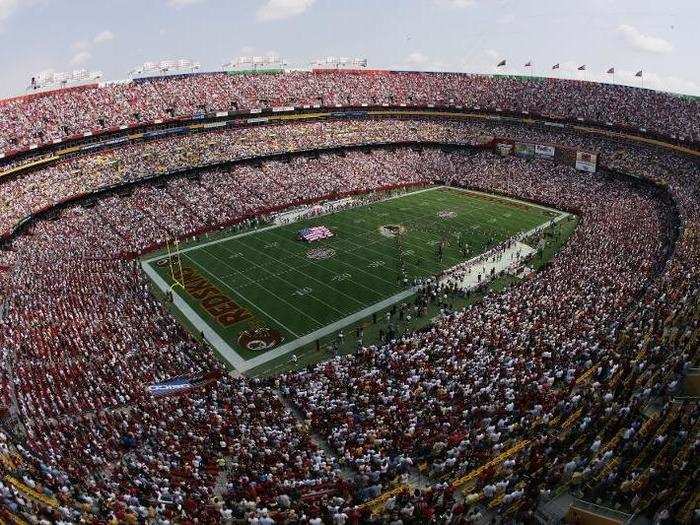
Capacity: 82,000.
Home team: Washington Redskins (NFL).
NFL franchise Washington Redskins has played its home games at FedExField since 1997, but the stadium has also hosted concerts for The Rolling Stones, U2, and Taylor Swift.
28: Croke Park — Dublin, Ireland
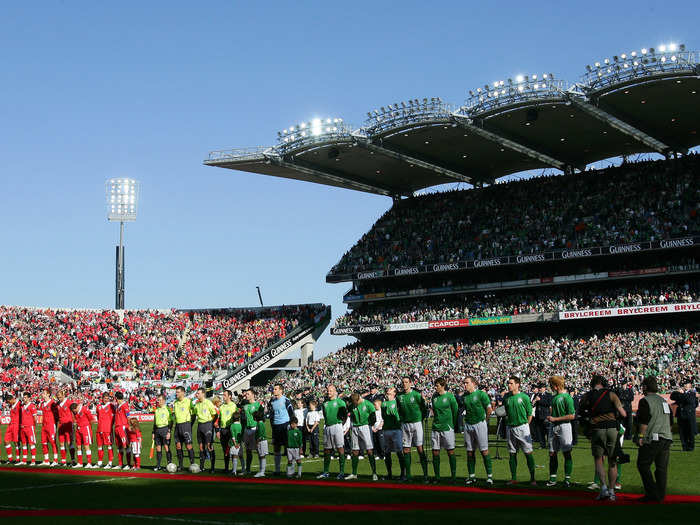
Capacity: 82,300.
Tenant: Gaelic Athletic Association (GAA).
Croke Park is known as the home of gaelic football, the Gaelic games, and hurling.
27: Metlife Stadium — East Rutherford, New Jersey, United States
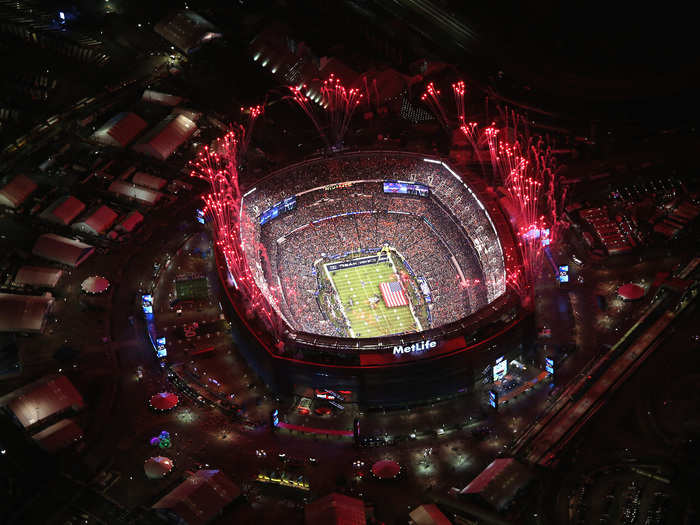
Capacity: 82,500.
Home teams: New York Giants and the New York Jets (both NFL).
MetLife, an insurance company in New York City, bought the naming rights for the stadium in 2011, shortly after the venue was constructed at a cost of $1.6 billion. It has hosted the Super Bowl, WrestleMania, and popular music artists like Bruce Springsteen, Beyoncé and Jay-Z, and Guns N' Roses.
26: Stadium Australia — Sydney, Australia
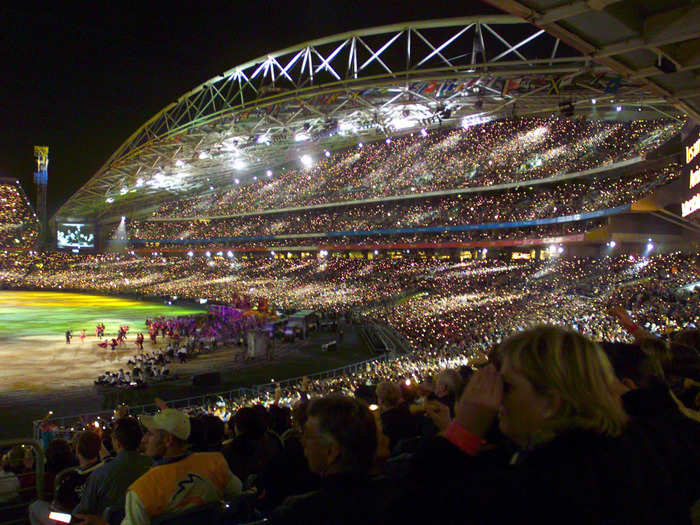
Capacity: 83,500.
Home team: New South Wales Blues (rugby league).
Built specifically for the 2000 Summer Olympics, the ANZ Stadium — or Stadium Australia — remains a multi-sport venue having hosted rugby league, rugby union, soccer, cricket, and motor sports.
25: Salt Lake Stadium — Kolkata, India
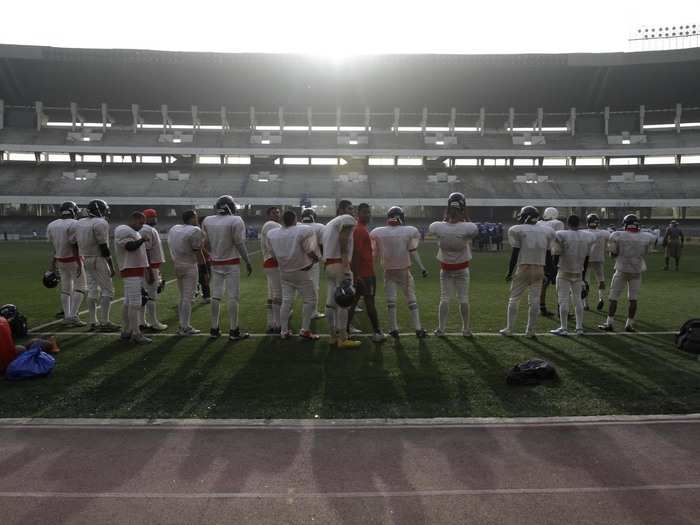
Capacity: 85,000.
Home team: Indian national football team (soccer).
The Salt Lake Stadium is the biggest stadium in India by seating capacity and has hosted major youth soccer tournaments like the 2017 FIFA Under-17 World Cup.
24: Memorial Stadium — Lincoln, Nebraska, United States
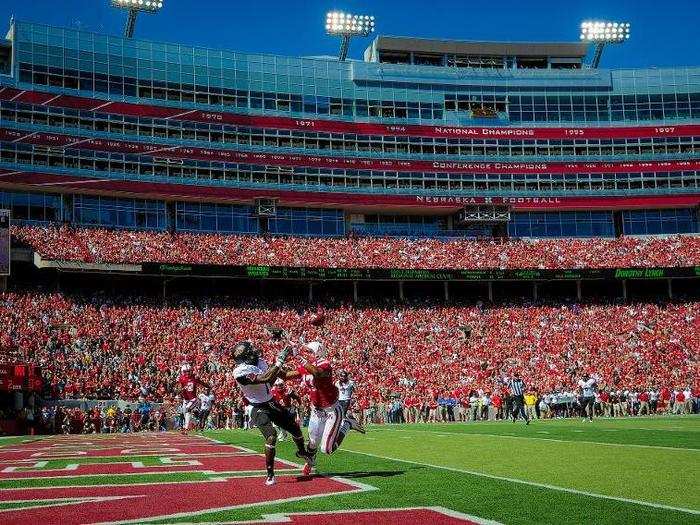
Capacity: 85,458.
Home team: Nebraska Cornhuskers (college football).
Known as the "Sellout King," the Memorial Stadium and Cornhuskers have a sellout streak that dates back to 1962.
23: Borg El Arab Stadium — Alexandria, Egypt
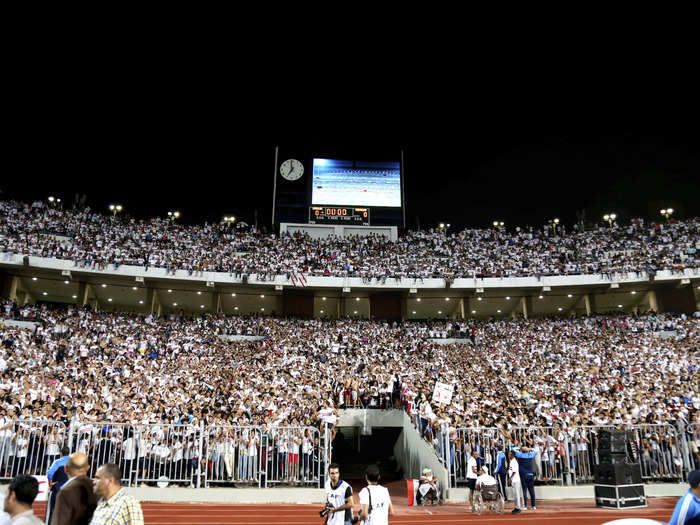
Capacity: 86,000.
Home team: Egypt national football team (soccer).
The stadium was originally commissioned to be a part of Egypt's bid to host the 2010 FIFA World Cup, which was eventually awarded to South Africa. It was built by the Egyptian Armed Forces Corps of Engineers.
22: Oklahoma Memorial Stadium — Norman, Oklahoma, United States
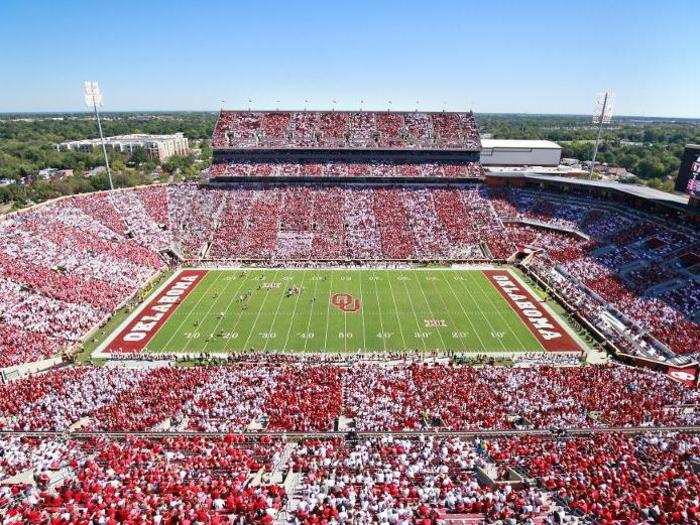
Capacity: 86,112.
Home team: Oklahoma Sooners (college football).
First opened in 1923 at a cost of $293,000, the Oklahoma Memorial Stadium has undergone numerous renovations and expansions with a further $125 million put to good use.
21: Estadio Azteca — Mexico City, Mexico
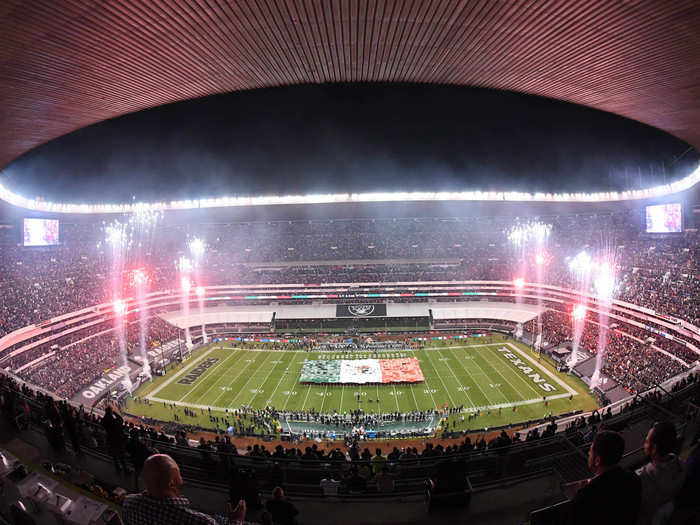
Capacity: 87,000.
Home teams: Mexico national football team and Club América (both soccer).
The largest stadium in Mexico, the Estadio Azteca has hosted the 1970 and 1986 FIFA World Cup finals. It was also one of the host stadiums for the 1968 Summer Olympics, has welcomed musicians like Paul McCartney and U2, and has been a venue for religious events and funeral services.
20: Bukit Jalil National Stadium — Kuala Lumpur, Malaysia

Capacity: 87,411.
Home team: Malaysia national football team (soccer).
The Bukit Jalil National Stadium is the largest in Southeast Asia and has hosted multi-sport events like the Southeast Asian Games.
19: Jordan-Hare Stadium — Auburn, Alabama, United States
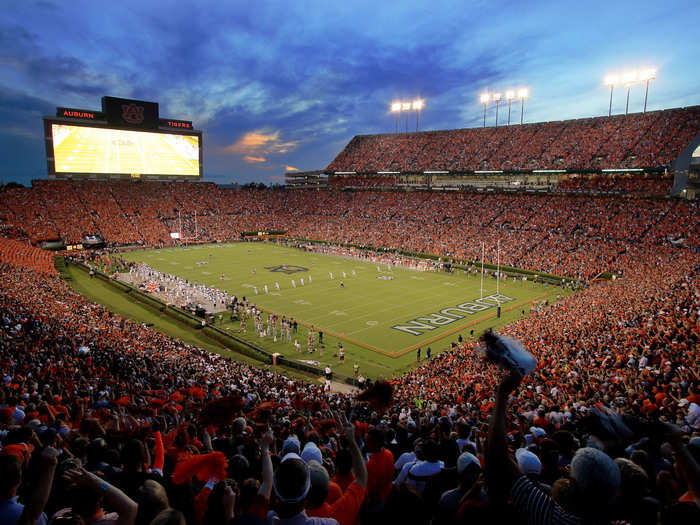
Capacity: 87,451.
Home team: Auburn Tigers (college football).
The stadium is named after two influential Auburn University sports figures — Ralph "Shug" Jordan, who has the most wins as head coach, and Cliff Hare, a former Auburn Tigers player.
18: Ben Hill Griffin Stadium — Gainesville, Florida, United States
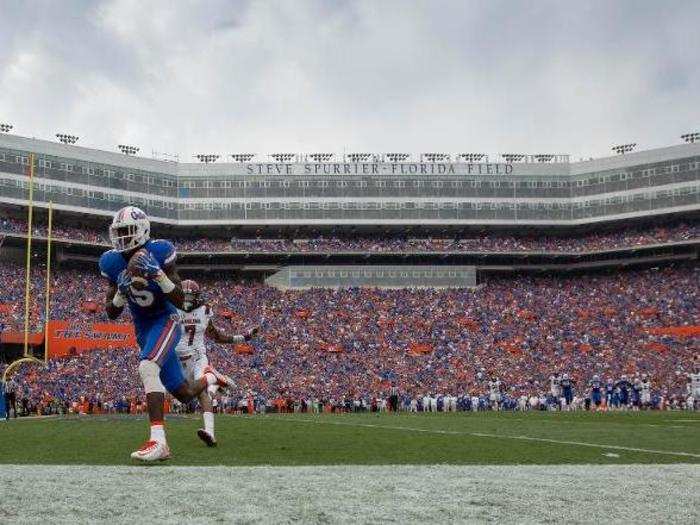
Capacity: 88,548.
Home team: Florida Gators (college football).
Nicknamed "The Swamp" as it is home to the Gators, the Ben Hill Griffin Stadium gives its college team a peculiar advantage. The stadium is built in a shallow sinkhole, below ground level. The stands are steep, providing fans with seats that are close to the action. These factors trap noise which provides great home support and an intimidating atmosphere for visiting teams.
17: Wembley Stadium — London, England
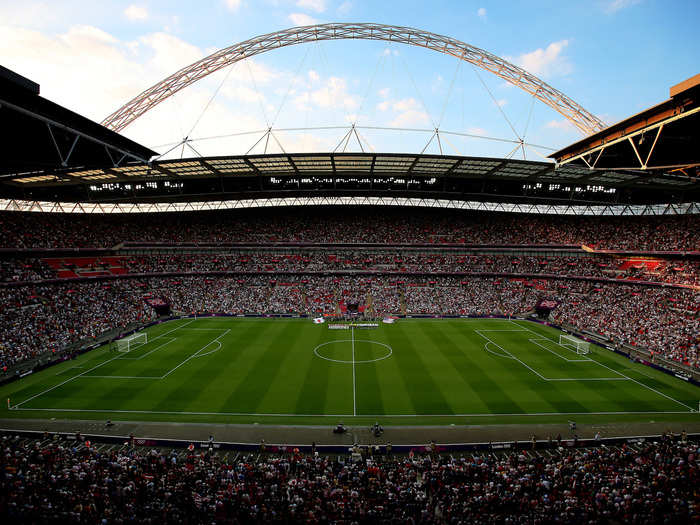
Capacity: 90,000.
Home team: England national football team (soccer).
Distinctive for the its structural arch, which supports around 75% of its roof load, the modern-day Wembley Stadium is the home to the England soccer team. It also hosts other major events like boxing world title fights, NFL games in London, and music concerts for artists like Foo Fighters, Oasis, and Take That.
16: Rose Bowl — Pasadena, California, United States
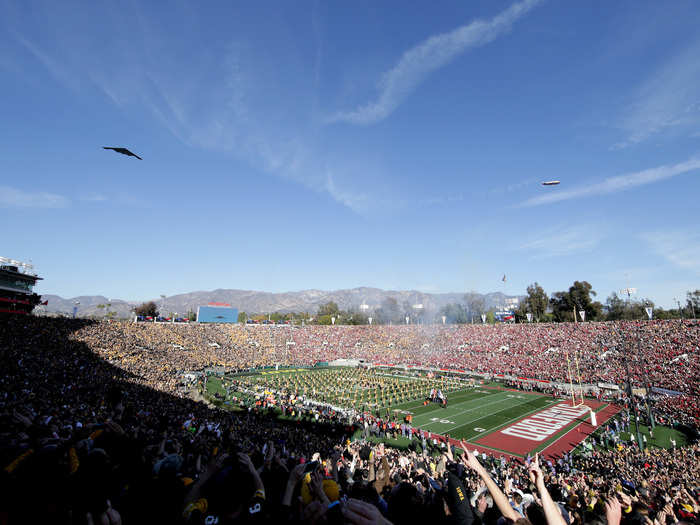
Capacity: 90,888.
Home team: UCLA Bruins (college football).
The Rose Bowl is not just a college football stadium. It has hosted the 1984 Olympic gold medal match in soccer, the 1994 FIFA World Cup final, and five Super Bowl games.
15: Cotton Bowl Stadium — Dallas, Texas, United States
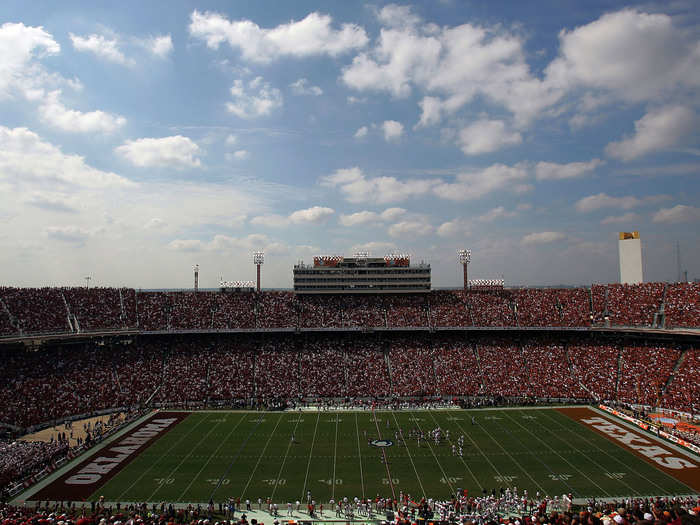
Capacity: 92,100.
Tenant: Dallas Independent School District.
MLS club FC Dallas and NFL team Dallas Cowboys have played their home games at Cotton Bowl in the past, but the stadium now hosts matches like the Red River Showdown, the Heart of Dallas Bowl, and the State Fair Classic.
14: Sanford Stadium — Athens, Georgia, United States
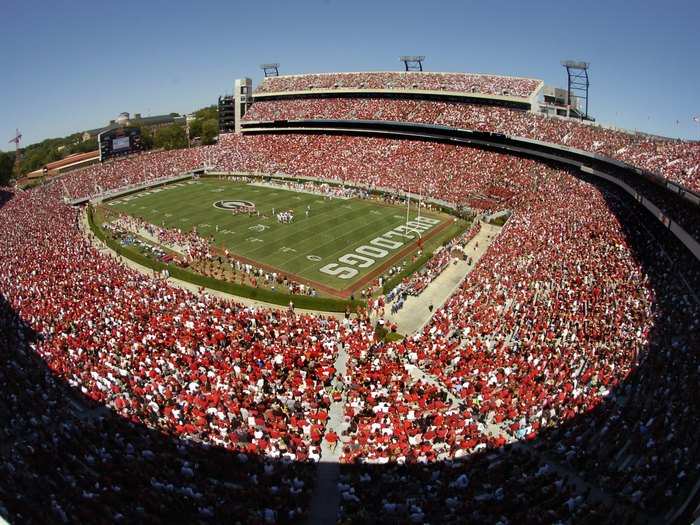
Capacity: 92,746.
Home team: Georgia Bulldogs (college football).
The field at Sanford Stadium is surrounded by privet hedges which are said to help with crowd control. Games in Athens therefore take place "between the hedges."
13: Los Angeles Memorial Coliseum — Los Angeles, California, United States
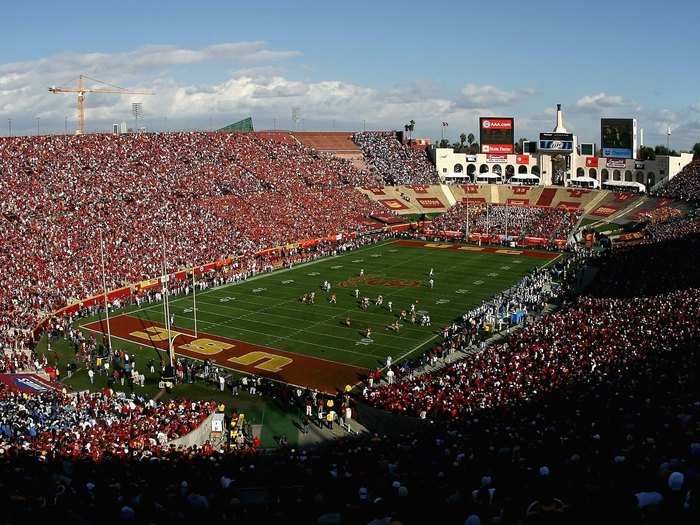
Capacity: 93,607.
Home team: USC Trojans (college football).
The Los Angeles Memorial Coliseum is steeped in sporting history. It hosted the Summer Olympics in 1932 and 1984 and will also be a host venue for the 2028 Summer Olympics. MLB team Los Angeles Dodgers and NFL side Los Angeles Rams have played there in the past.
12: Soccer City — Johannesburg, South Africa
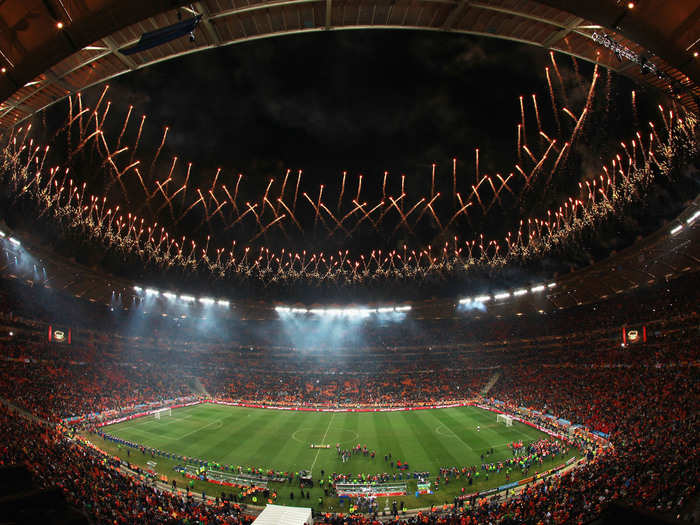
Capacity: 94,736.
Home team: South Africa national football team and Kaizer Chiefs (soccer).
Built in 1989 and widely used as a soccer stadium, Soccer City — or FNB Stadium for sponsorship purposes — was also the site of Nelson Mandela's first speech in Johannesburg following his release from prison in 1990. After Mandela's death in 2013, a memorial service was held for him at the venue.
11: Camp Nou — Barcelona, Spain
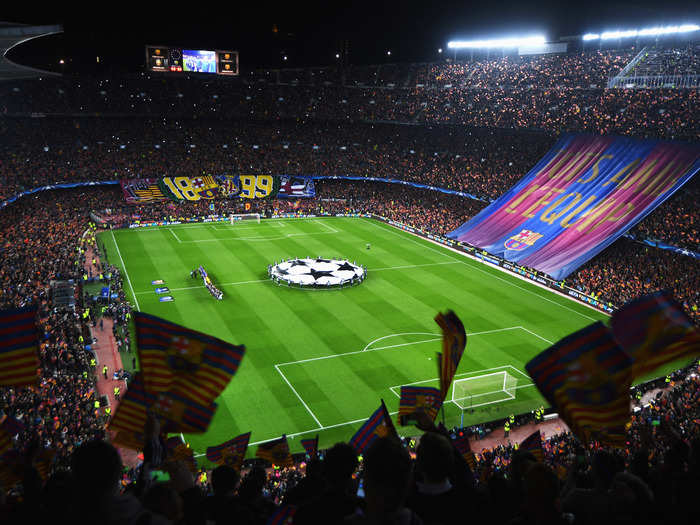
Capacity: 99,354.
Home team: FC Barcelona (soccer).
The Camp Nou, the largest stadium in Europe, is famous for being home to FC Barcelona, one of the best soccer teams in the world, and by extension, Lionel Messi, one of the best players on the planet.
10: Melbourne Cricket Ground — Melbourne, Australia
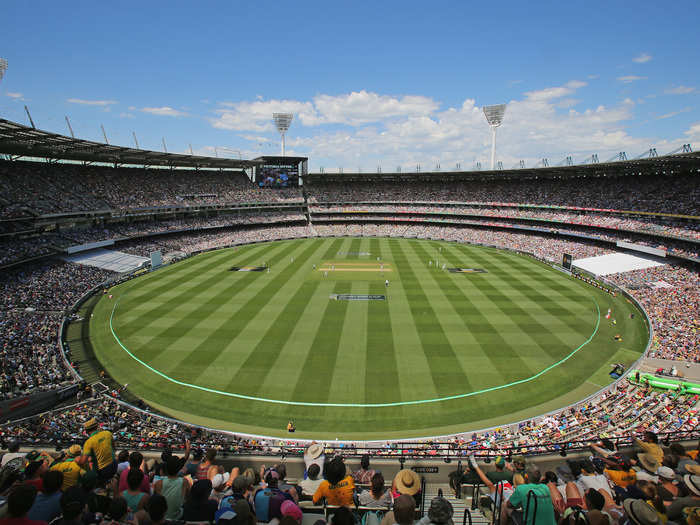
Capacity: 100,024.
Home team: Melbourne Cricket Club (cricket).
The Melbourne Cricket Ground, simply called "The G," has a long and illustrious history. Built in 1853, it has hosted the 1956 Summer Olympics, the 2006 Commonwealth Games, and two Cricket World Cups (1992 and 2015).
9: Darrell K Royal-Texas Memorial Stadium — Austin, Texas, United States
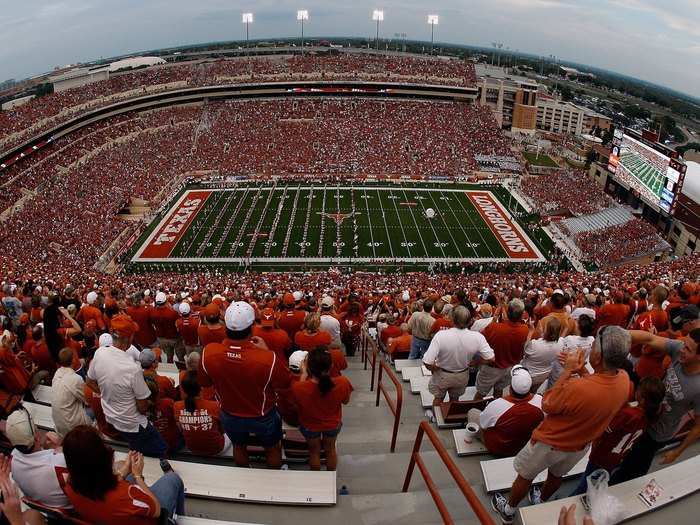
Capacity: 100,119.
Home team: Texas Longhorns (college football).
The Memorial Stadium opened in 1924 at an initial cost of $275,000 but has undergone major renovations over the years. For instance, the Godzillatron — a 7,370 square foot LED scoreboard — was installed in 2006.
8: Bryant-Denny Stadium — Tuscaloosa, Alabama, United States
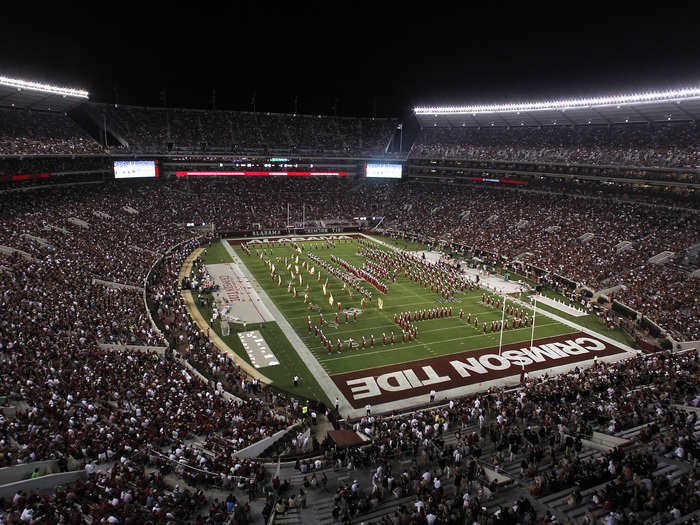
Capacity: 101,821.
Home team: Alabama Crimson Tide (college football).
University of Alabama alumnus James M.Fail lent his name to part of the stadium as it was "an appropriate opportunity" to call the visitors' locker room "The Fail Room."
7: Tiger Stadium — Baton Rouge, Louisiana, United States
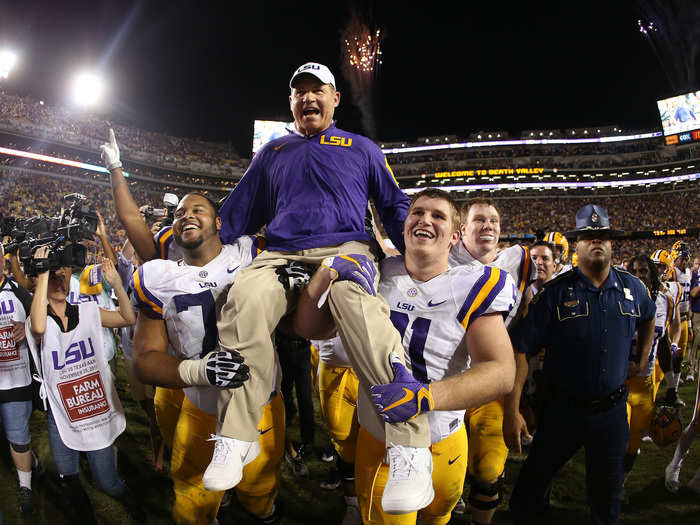
Capacity: 102,321.
Home team: LSU Tigers (college football).
The raucous atmosphere generated by home fans means the Tiger Stadium can be one of the loudest and most intimidating venues for opposing teams.
6: Neyland Stadium — Knoxville, Tennessee, United States

Capacity: 102,455.
Home team: Tennessee Volunteers (college football).
The Tennessee Volunteers has called the Neyland Stadium its home since 1921, when the ground was constructed at an initial cost of $42,000. It has also hosted concerts, political rallies, and religious gatherings.
5: Kyle Field — College Station, Texas, United States
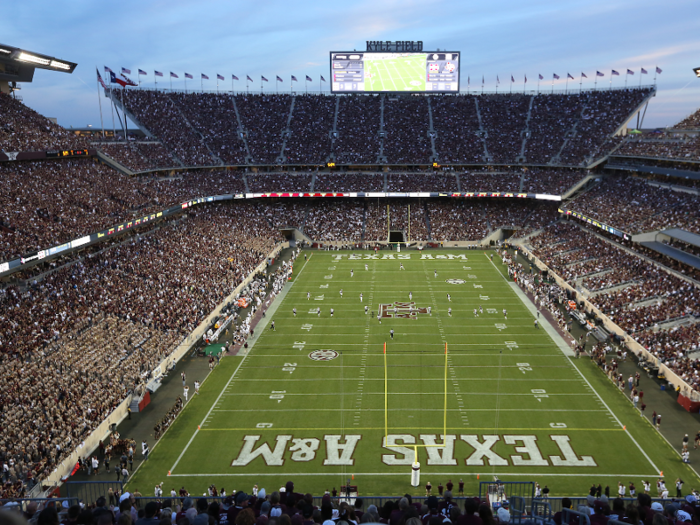
Capacity: 102,733.
Home team: Texas A&M Aggies (college football).
Kyle Field has been used as an athletic ground since 1904, when wooden bleachers were erected to seat 500 people, but the capacity has grown significantly over the years.
4: Ohio Stadium — Columbus, Ohio, United States
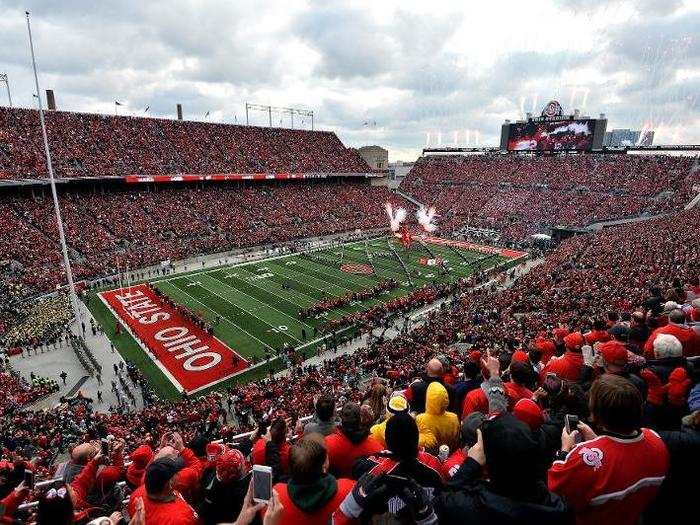
Capacity: 104,944.
Home team: Ohio State Buckeyes (college football).
The Ohio Stadium — also known as "the Horseshoe" — hosted MLS team Columbus Crew from 1996 to 1998. Bands like The Rolling Stones, and Metallica have played at "the Shoe" but its main occupant is the Ohio State Buckeyes football team.
3: Beaver Stadium — University Park, Pennsylvania, United States
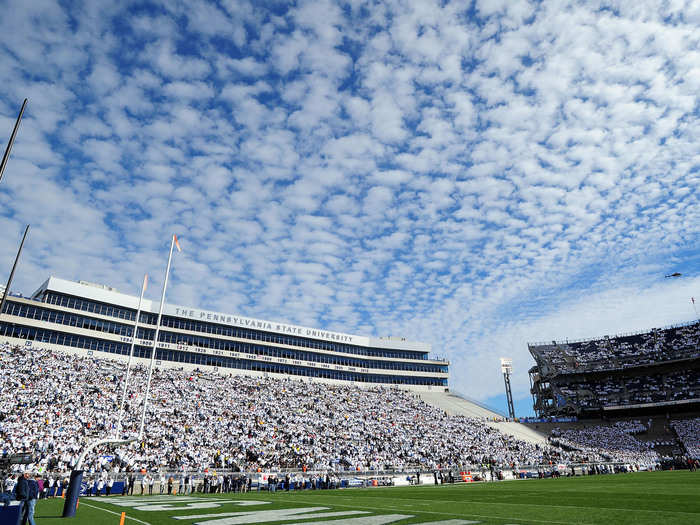
Capacity: 106,572.
Home team: Penn State Nittany Lions.
Beaver Stadium in Pennsylvania may be third in this list for now — but it won't stay here for long. The stadium is antiquated, has outdated plumbing, and requires renovation. Modernisation plans will reduce the capacity to 103,000 in the coming decade.
2: Michigan Stadium — Ann Arbor, Michigan, United States
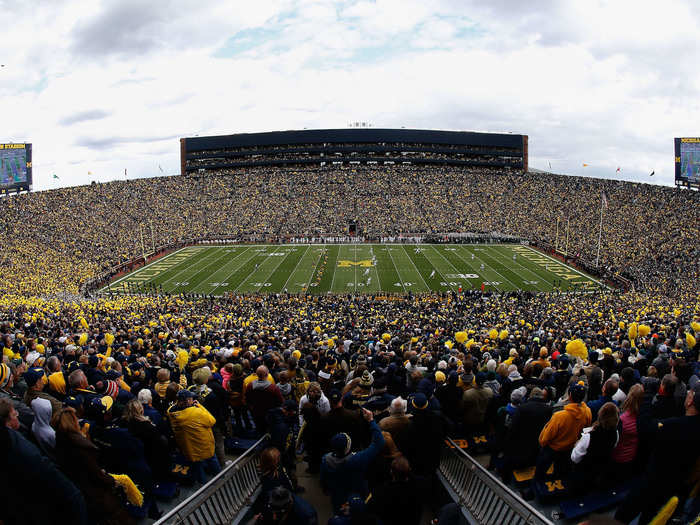
Capacity: 107,601.
Home team: Michigan Wolverines (college football).
With a capacity close to 110,000, it's easy to see why the Michigan Stadium is known colloquially as "The Big House." Originally built in 1927 at a cost of $950,000, it has grown steadily from its initial capacity of 72,000, into the largest stadium in the US at 107,601.
1: May Day Stadium — Pyongyang, North Korea
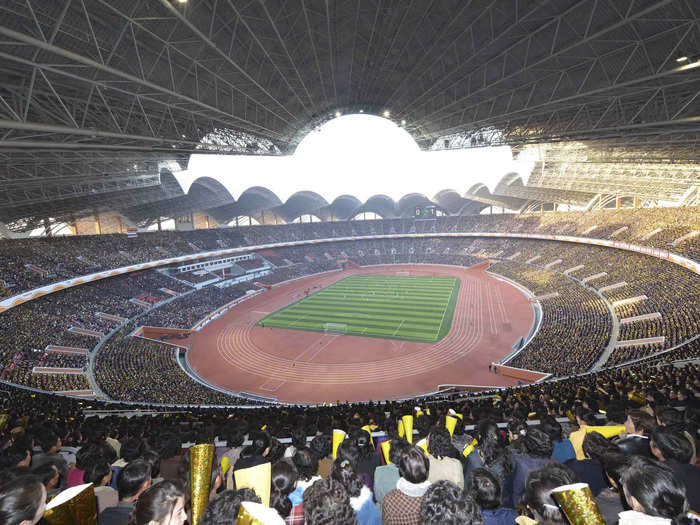
Capacity: 114,000.
Home team: North Korea national football team (soccer).*
Since 1989 the May Day Stadium has been used to celebrate former North Korea leader Kim Il Sung, the North Korean nation in general, and sporting events like wrestling and long-distance running. It originally sat 150,000 people but it has since become an all-seater ground which means its current capacity is now 114,000, according to The Daily Telegraph.
*The North Korea football team also plays at the Kim Il Sung Stadium in Pyongyang.
Popular Right Now
Popular Keywords
Advertisement